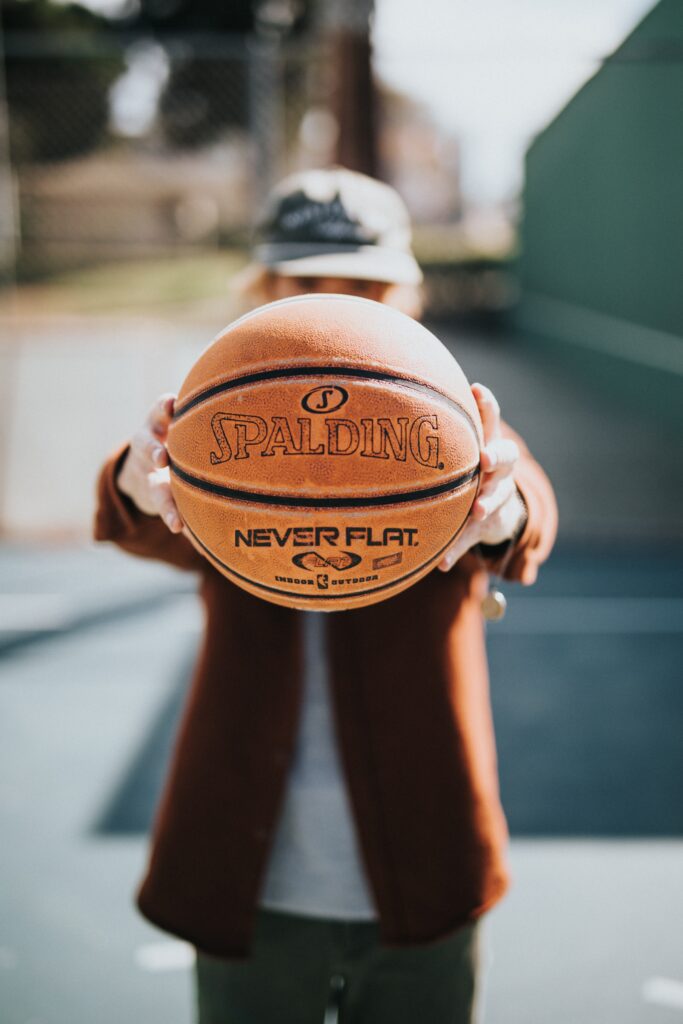Did you know that next to the opinion section the sport section is the most widely read part of a newspaper? However in high school journalism, students can find out the score of the game long before we can get it in print. So how do we entice our sports readers and fans to read the sport section of a high school newspaper? In my sports writing unit, I try to teach kids about the three most common types of stories: game story, feature story, and columns and side bars.

By the time my kids write a sport story, the score itself is pretty widely known, so our job as a high school paper is to tell the stories that the score alone doesn’t help. The game story or season summary can be one of the most gripping opportunities to include frustration, euphoria, confusion, excitement, and suspense!
The first step of teaching kids how to write a good game story is to start with two basic assumptions:
1. That sports are really important to our school community and that students generally know how well a particular team is performing.
2. We also have to assume that most students understand the basic rules of play for a particular sport. I highly discourage students from spending any time explaining the mechanics or guidelines of how a particular sport is played.
1. Make sure to include the final score the performance of the game, as this will frame the overall angle and focus. Again, most people probably already know the score, so the remainder of the story will be exploring all of the different components that lead to the win or the loss.
2. Make sure that in the lead or the nutgraph, the reporter and identifies which teams played and where they played. Also, include important facts like the gender and the level (i.e. variety, JV, etc.).
3. The meat and potatoes of any good game story lies in the description of the winning plays or the performance of the team members.
4. Evaluate the highs and lows using statistics and specific plays from what they observe. If they have a really strong season, encourage the reporter to explore the “why’s” behind a particular outcome or moment.
5. Avoid the obvious or cliché comments. When trying to capture those emotional moments like the suspense, the drama, the win, the loss or the upset, encourage your students not to be overly obvious or cliché. I see so many sports stories were students act as cheerleaders for their school team. It’s easy to do, as most students take a lot of pride in their school sports. However go beyond the cliché comment of “I am so proud of our team” and give specific reaction, action, or reflective comment about why they are proud.
6. Another great tip is to connect the dots and show the relationships between games already played and games coming up in the future. Make connections between seasons and past or future games. Touch on whether students return from last year or whether this is a brand new group of athletes. Try not to explore any particular game in isolation, as several more games will already have occurred between the time students covered a specific event and the time the print or online article is in the hands of the readers.


Here are a couple things to consider when teaching your kids how to write a game story:
-Be sensitive to the emotions and inner feelings about the players and the coach. It’s very easy to sit in the stands and armchair quarterback any particular game or play. However that is not your job as a reporter. What you want to do is really capture the essence of the emotion on the field or court.
-Another great tip is to get the coach involved. Sometimes the coaches can be incredibly challenging to get a hold of, but getting some insight from the adult who knows that sport more intimately than anybody else, can really help direct the angle and focus of the story.
Another really popular way to include sports in your high school publication is through the feature story. This is a story using strategies from news feature writing to cover an athlete or a coach.
To start, a feature on an athlete is not a “player of the month or athlete profile”. It is also not a review of that particular person’s strengths and weakness using cliché quotes.
What a good sports feature will do is concentrate on an individual player, the emotions may be during a game, their history are what led them to put this particular sport or moment in time, and their hopes or goals for their sport or their season.
Much like covering any other individual, reporter don’t be afraid to analyze and interpret a situation, use observation in terms of what you notice about that particular player, and their interactions with other players and their overall strings.
One of the benefits of writing a feature story, is the opportunity to use descriptive language and really capture the emotion of the experience, rather than just the statistics that typically accompany a sports story.
Tell the story behind the win or the loss and how it directly impacted a particular individual. Talk about what they did in order to prepare for that particular game , talk about who supported them along the way, and what some of the trade-offs are for their commitment and dedication to that support.
1. Concentrate on Emotions: Concentrate on emotions before and after. Show the butterflies before the contest, the relief afterwards.
2. Analyze and Interpret: Don’t be afraid to analyze and interpret a situation. Rely on your own observations to explain the meaning of a play or moment. There’s a fine line between analysis and editorializing.
3. Conduct interviews away from the locker room: Removing an athlete from the locker room can allow for some unique perspectives and separation from the intense moments of the game.
4. Pay attention to details: Pay attention to the tiny details, the small movements that betray what’s going on inside.
The final type of sports writing that I include in my classroom is the sports commentary or sports column. Some of you might know famous columnist Rick Riley from Sports Illustrated, who made humor and commentary writing legendary. However, teaching a student how to respectfully and maturely approach a sports article with the perspective of infusing opinion can be very challenging. What a commentary story does is basically gives the reporter an opportunity to include their voice about a specific event, issue, or game related to any sports topic.
I try to help my students frame this around for specific goals:
1. Prediction
2. Overall opinion and analysis
3. Interpretation or
4. Humor or straight data.
One of the cardinal rules encourage my kids to keep front and center whenever they write an editorial is not to be a know it all. No coach, athlete, or fan likes somebody second-guessing because ultimately at the end of the day our reporters were not in the game at that moment. They might have opinions about a particular call, or play, but make sure whatever position they take should be supported by fact, statistics, or quotes. It should also not personally attack any individual player or coach.
1. Get your facts straight. Nothing destroys credibility more quickly than a factual error, no matter how small.
8. Don’t criticize the players, especially after a touch toss.
9. Don’t imitate the talk-radio blabber mouths.
10. Have something to say that’s meaningful and relevant.
11. Don’t confuse your publication with Sports Illustrated or ESPN. Cover your school!
Photo credit Unsplash by Lysander Yuen